Microshading: The Ultimate Guide
PMUHub has prepared a detailed guide through the microshading treatment. Find out what is microshading, how it can enhance your look, and who it’s for.
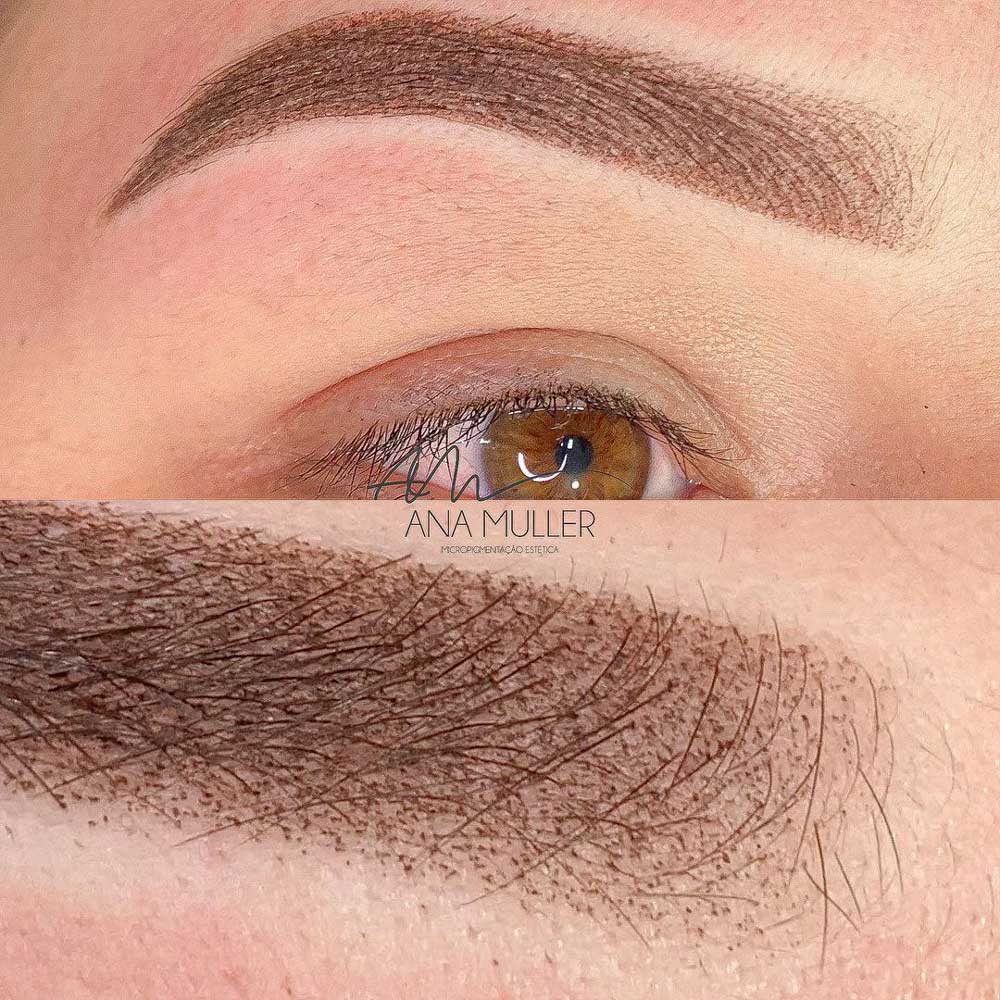
Image source : PMUhub
Explore more Microshading topics
Editor’s Note: This post was originally published in April 2019. Updated in October 2021.
Semi-permanent eyebrow tattoos now offer a huge variety of techniques and styles to choose from.
One of the most versatile techniques is microshading, a type of permanent eyebrow that gives you the look of wearing subtle brow makeup. A bit bolder than microblading, this technique is great for anyone who wants a powdery effect.
What’s also good to know is that microshading is suitable for all skin types, so if you’ve been told microblading is not an option for you, microshading is the way to go.
PMUHub answers all your questions about microshading eyebrows.
ABOUT MICROSHADING
What Is Microshading?
Microshading is a form of a cosmetic eyebrow tattoo that gives your brows a soft shadowy effect, similar to the look of wearing a brow powder. It fills in any sparse patches and gives the brow volume and thickness, plus it can modify its shape to best suit your features.
It doesn’t wash off or smudge, and it lasts up to 3 years.
This technique is performed with either a manual tool, or an electric PMU machine, or both. The effects are achieved by implementing special pigments into the surface layers of the skin in tiny dots that can be more or less saturated, depending on how dramatic you want the look to be.
It’s a very versatile technique, so it can be done in many styles, from the soft, misty shadow, to a dramatic ombre gradient. It’s most often combined with hair strokes. It can be as subtle or as dramatic as you want it.
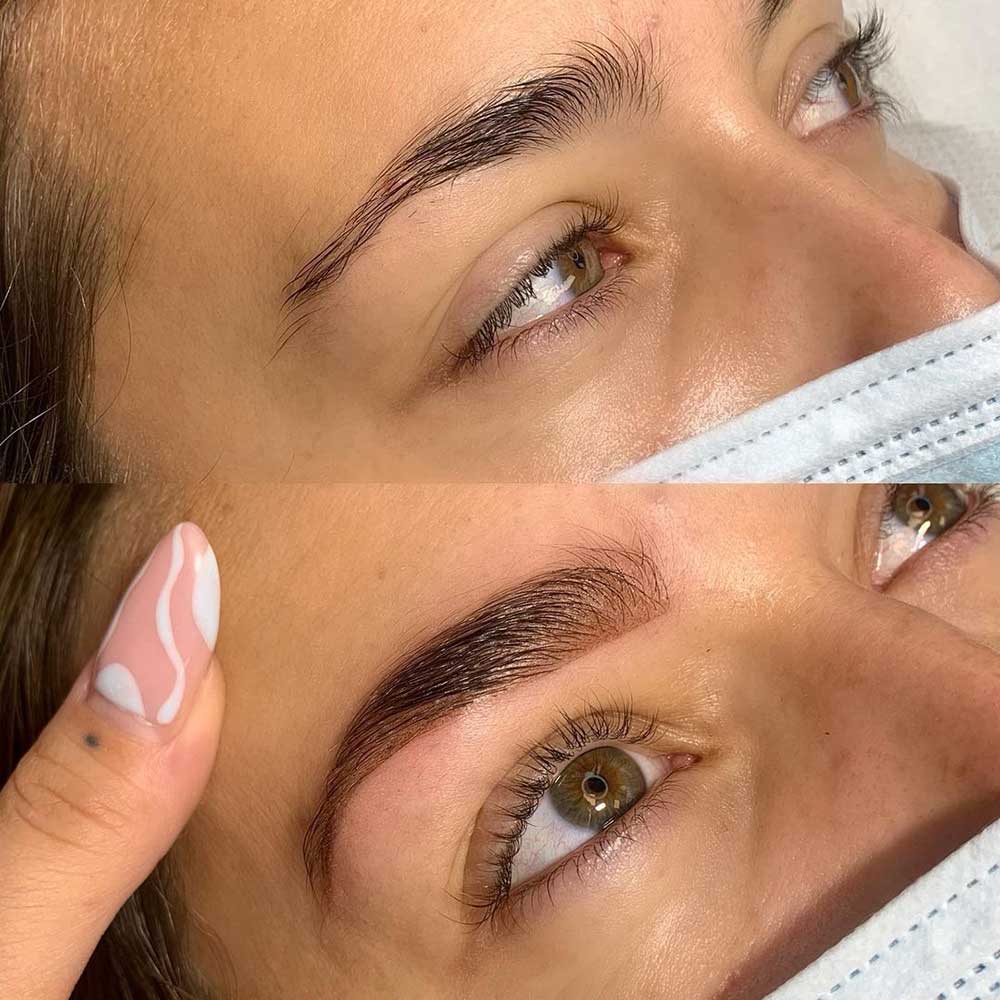
Wait, Didn’t You Just Describe Powder Brows?
Yes, microshading and powder brows are very similar and the line between them is thin. So many artists consider them to be one and the same.
However, there are a few differences.
The biggest one is that microshading often includes hair strokes, too, while powder brows do not.
Powder brows are only done with a PMU machine, while microshading can also be done manually, for a softer effect. Powder brows can only be done by artists certified for that, while manual shading can be performed by microblading artists, too.
Another difference is in the results.
Powder brows are more dramatic, and they give a more solid, opaque shade. Microshading is more misty, and it’s often combined with hair strokes. Of course, you can get more saturated microshading and it can look a lot like powder brows.
Again, a thin line between the two.
If you’re interested in more info on the Powder Brows treatment, take a look at Powder Brows – The Ultimate Guide.
What Is the Difference Between Microblading and Microshading?
Different Technique
Microblading uses a very thin blade to make incisions on the skin that look like natural brow hairs, and fills them with pigment.Microshading is done with a needle, either an electric one, or a manual tool. It deposits pigments in countless tiny dots, so there are no strokes. It’s considered to be more gentle on the skin.Different Look
Microblading gives the illusion of thicker natural brows, like you have more hairs than you actually do. It looks very natural, like you’re not wearing makeup.Microshading creates a shadow underneath your natural hairs (and the hair strokes, if you get those too), so it looks like you’re wearing a bit of brow powder. It’s a more dressed up look.Can Microblading and Microshading Be Combined?
Yes! In fact, they almost always are.
You can get the so-called hybrid brows, a combination of hair strokes and shading. The result is the look of thicker brows filled in with some makeup. It’s a great option if you want more natural-looking volume, but have oilier skin – the shading will prevent the strokes from looking blurry.
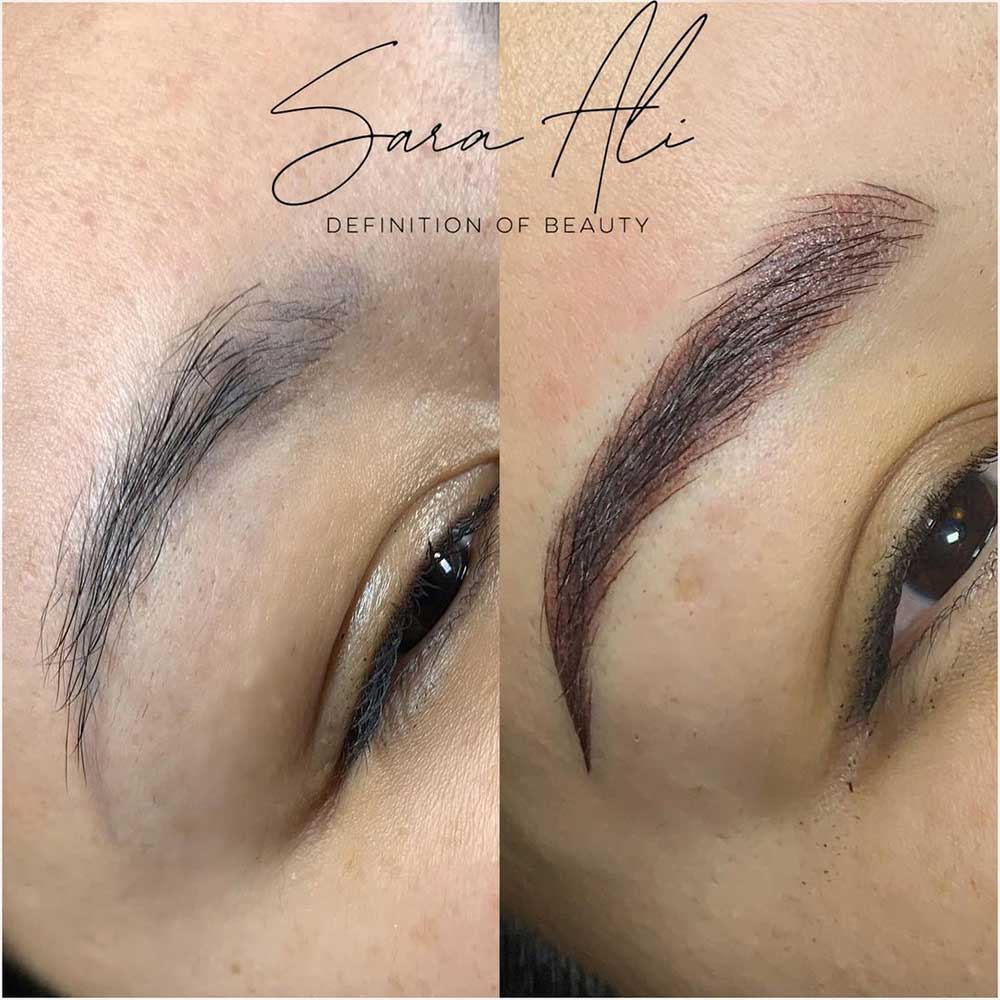
Who Is a Candidate for Microshading?
Microshading is suitable for all skin types. Unlike microblading, which isn’t recommended for clients with oily skin and large pores due to strokes blurring, microshading can work equally well regardless of skin type.
It’s also the only option for covering up the shadow left after old brow tattoo fading, since strokes wouldn’t show.
Clients who’ve had multiple microblading tattoos and whose skin is too saturated with pigment for getting fresh strokes should also switch to microshading.
On the other hand, there are certain contraindications, just like with any eyebrow tattoo. Microshading is not safe for:
- People with diabetes (consult your doctor)
- People who are going through chemotherapy
- People with any bleeding disorders
- People who take blood-thinning medications (consult your GP and discontinue use if possible)
- People who’ve recently had Botox injections or fillers (wait at least 4 weeks)
- Pregnant or nursing women
- People with a history of keloids or hypertrophic scarring
- People with viral infections or diseases
- People with skin irritations or Psoriasis near the treated area
- People whose skin was tanned recently
ABOUT THE MICROSHADING TREATMENT
How Long Does the Microshading Treatment Take?
The treatment usually lasts between 2 and 3 hours. For most clients, it requires an additional touch up session 6-8 weeks later to add more pigment.
How Long Does the Microshading Treatment Take?
Microshading eyebrows is usually done like this:
Step 1 – Consults
Discuss your expectations with your artist. Tell them what type of look you want, and ask as many questions as you want about the procedure.
They will explain the process, and give you aftercare instructions.
They’ll also give their opinion on the best shape and color for you. Take their advice into consideration, they know what colors work on which skin tones and how they’ll look healed.
Step 2 – Numbing
The artist will clean your brows and apply a numbing cream onto the area. The numbing will diminish any pain you may feel during the procedure. It takes about 15-20 minutes to start working.
Step 3 – Mapping
While you’re waiting for the numbing to kick in, the artist will measure the area and draw the outline of your future brows.
NOTE: Some artists outline first, and numb second. It depends on their preference.
Step 4 – Tattooing
Once the numbing has started working and you’re satisfied with the outline, the pigmentation starts.
The artist will go back and forth over your brows with an electric device or a manual tool and build up pigment saturation. They may add in some hair strokes manually. It can take up to 2 hours.
Step 5 – Cleaning
The artist will clean your brows and that’s it, your brows have been successfully microshaded!
They’ll prescribe an ointment you’re supposed to apply and go over the aftercare routine once again.
Step 6 – Touch Up
In order to make the color more even and make your microshading eyebrows last as long as possible, you’ll need to come back in for an additional session 6-8 weeks later, once your brows have healed.
The touch up looks a lot like the initial session, but much less work will be done. The artist will just fill in some spots that may have faded lighter.
Does the Microshading Process Hurt?
This is a difficult question to answer, mainly because the definition of pain varies from person to person.
People who wax or pluck their eyebrows regularly will not find the microshading procedure very painful, whereas someone who has never had their brows plucked might feel some level of discomfort.
The good thing is that the artist will use a safe topical anesthetic cream that they will apply to your eyebrows in order to ease the procedure as much as they can.
That said, during healing your powder brows might feel sensitive and itchy, which might be more uncomfortable than the procedure itself.
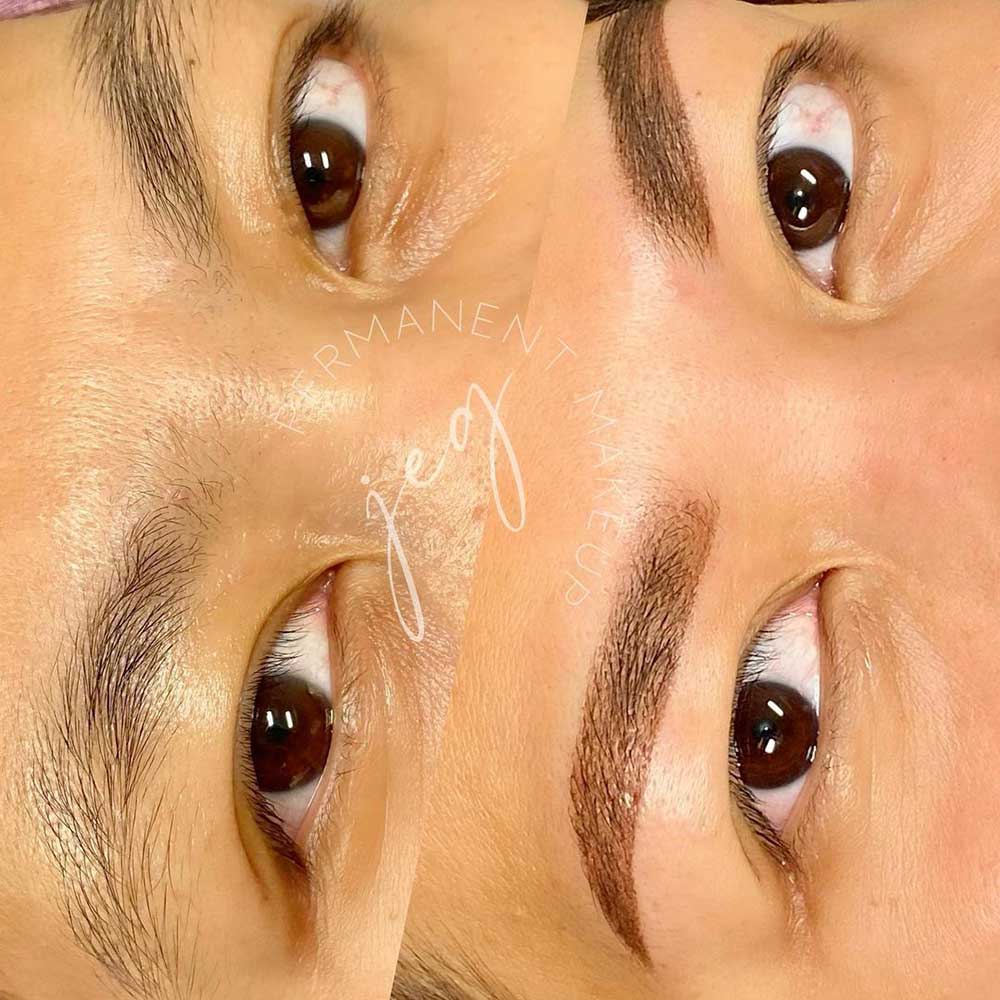
Is Microshading Safe?
Any procedure that involves breaking the surface of the skin and applying products onto it carries the same risks:
- Infection
- Scarring
- Allergies
However, the chances of any of these occurring are minor if the treatment is done right. A trained, certified artist who works in sterile conditions and does a patch test knows how to prevent them.
PREPARATION FOR MICROSHADING EYEBROWS
How Do I Prepare for the Treatment?
There are a few things you should do in order to prepare for the treatment:
- Don’t go sunbathing or tanning for about 2 weeks. Tanned skin is more sensitive.
- Stop using any retinol or Vitamin A products one month prior. These thin out the skin and make it bleed more.
- Avoid alcohol, caffeine, ibuprofen, aspirin and fish oil supplements for at least 24 hours prior to your appointment.
- Don’t pluck or wax your eyebrows at least a week before the treatment.
- Don’t do any facials at least two weeks before the treatment.
- If you take blood-thinning medication, consult your GP and see if it would be safe to discontinue the use for a few weeks.
MICROSHADING AFTERCARE
What Does Microshading Aftercare Involve?
Once you’re finished with your treatment, your skin will need some time to heal, during which you need to pay some special attention to it.
Here’s everything you need to know about microshading aftercare:
- On day 1 clean the lymph build-up 2-3 times a day. Starting from day 2, wash the area as often as prescribed with sterile water. Your eyebrows are an open wound, which needs to be cleaned.
- Your artist will probably prescribe an aftercare ointment. Make sure to apply the ointment 3 times a day, or following a different schedule prescribed by your artist. Always use clean fingers or a cotton swab.
- Never touch the treated area with your fingers unless they are completely clean. The same goes for q-tips, cotton swabs, and basically any surface that comes into contact with your brows.
- Sleep on a clean pillowcase, ideally a silk one.
- Do not scratch, rub, pick or peel the healing skin. Allow it to flake off on its own so as not to damage your skin or your results.
- Always apply a light coat of ointment on the area before a shower or bath, and continue with this until the treated area is completely healed.
- Avoid any makeup, facials, sweating, sun exposure, sauna, jacuzzi, or swimming until the area is completely healed.
- Try to avoid getting your eyebrows soaking wet. If they get wet, pat them dry as soon as possible. No rubbing!
- Do not use any anti-aging products, especially those that contain lactic acids, glycolic acids, and retinol, as they will fade your eyebrow area.
- In order to prevent future fading of your pigment color, use sunblock whenever you’re outside.
Once the peeling phase ends, you may proceed with your regular activities, but it’s best to keep avoiding certain skincare ingredients, and keep wearing sunblock.
Can I Wear Makeup After the Treatment?
Not immediately, no.
In the first 7 or so days after the treatment, you should avoid all makeup. No products apart from the prescribed aftercare balm should come in contact with your brows.
After that, you can start wearing makeup on the rest of your face, but avoid the brow area until it has healed.
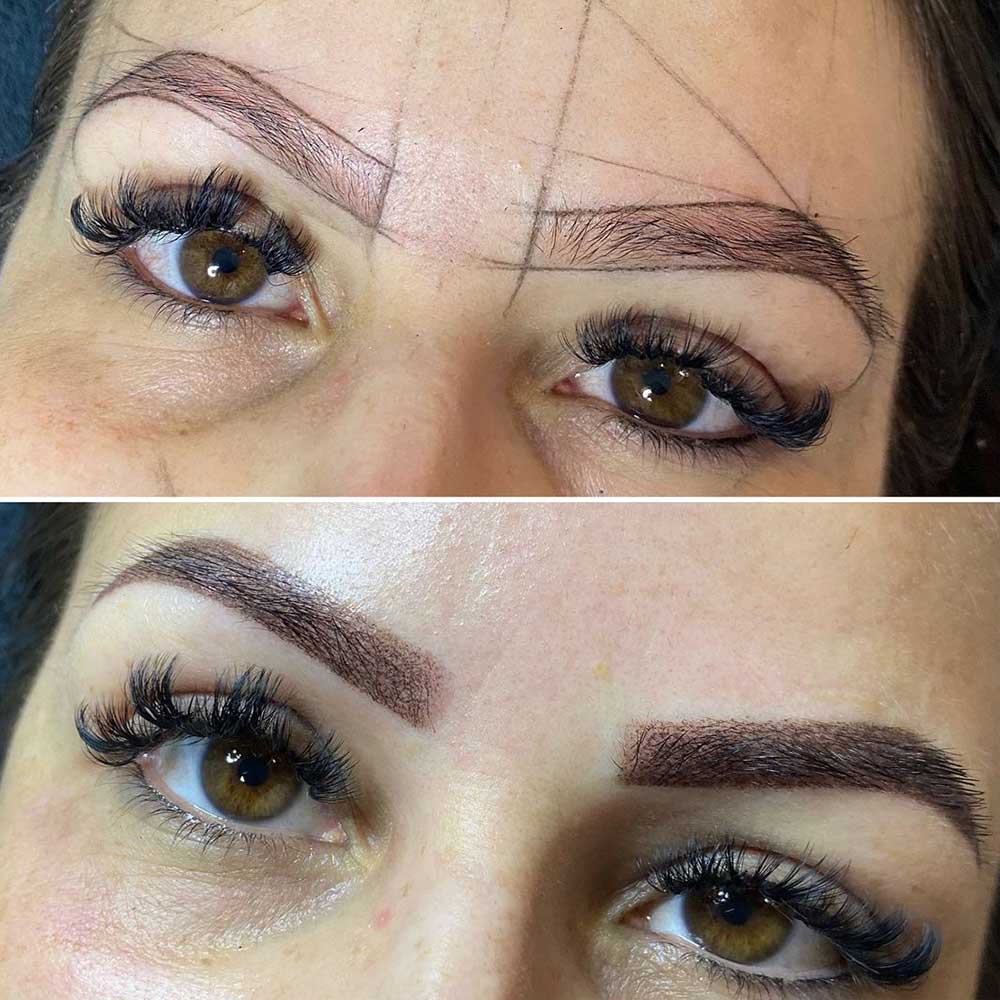
MICROSHADING HEALING
How Long Does Microshading Healing Last?
It takes 6-8 weeks for your brows to completely heal. This is how long it takes for the tissue underneath the skin surface to recover, and that’s why you can’t get a touch up sooner than that.
The surface symptoms of healing last much shorter.
Your eyebrows will go through several phases during the healing cycle and not all of them will be very attractive.
Days 1-2
Your brows will look too dark for a few days after the treatment.
Days 3 – 7
A scabby film will cover your brows around day 5. Do not touch it.
Days 7 – 14
The scabs will start peeling off on day 7 or so. It may go through 2 cycles of peeling. Do not pick at the peeling skin.
Day 14 Onwards
If the peeling has finished, the surface of your skin has healed. If it’s still peeling, keep following the aftercare rules until it has stopped.
The pigments will look too light right after peeling. Don’t worry, they’ll gradually darken within a few weeks.
Find out more about the healing stages on our Microshading healing process page.
What Should I Avoid During Healing?
Make sure you avoid the following activities so your brows heal properly and avoid infections:
- Swimming
- Sports or anything that will cause excessive sweating
- Saunas, steam baths, hot baths, long showers or jacuzzis
- Too much sun exposure
- Any skincare product not prescribed by your artist
- Any kind of beauty treatments, especially chemical peels
- Picking, peeling, or scratching the pigmented area
- Sleeping on your face
MICROSHADING TOUCH UP
What Should I Avoid During Healing?
The first touch up is done 6-8 weeks after the initial treatment and it’s mandatory for most clients.
The healing process sometimes leaves sparse patches where pigments didn’t settle properly, and the touch up is a chance to replenish them and perfect the results.
Further touch ups are up to you, they’re not mandatory. However, if you want to keep your brows looking fresh, annual touch ups are recommended.
MICROSHADING EFFECTS
How Long Will My Microshaded Eyebrows Last?
Being a semi-permanent eyebrow treatment, microshading can last from 1 to 3 years, with annual touch ups recommended for best results.
However, note that your aftercare routine and general lifestyle in combination with your skin type will affect how long microshading brows last. They’ll fade sooner if they’re exposed to sunlight, salt and pool water, and harsh skincare ingredients often.
You can book a touch up as soon as you notice that your pigment is fading. If you wait too long, you will perhaps need to go through the whole process again which is longer and more expensive.
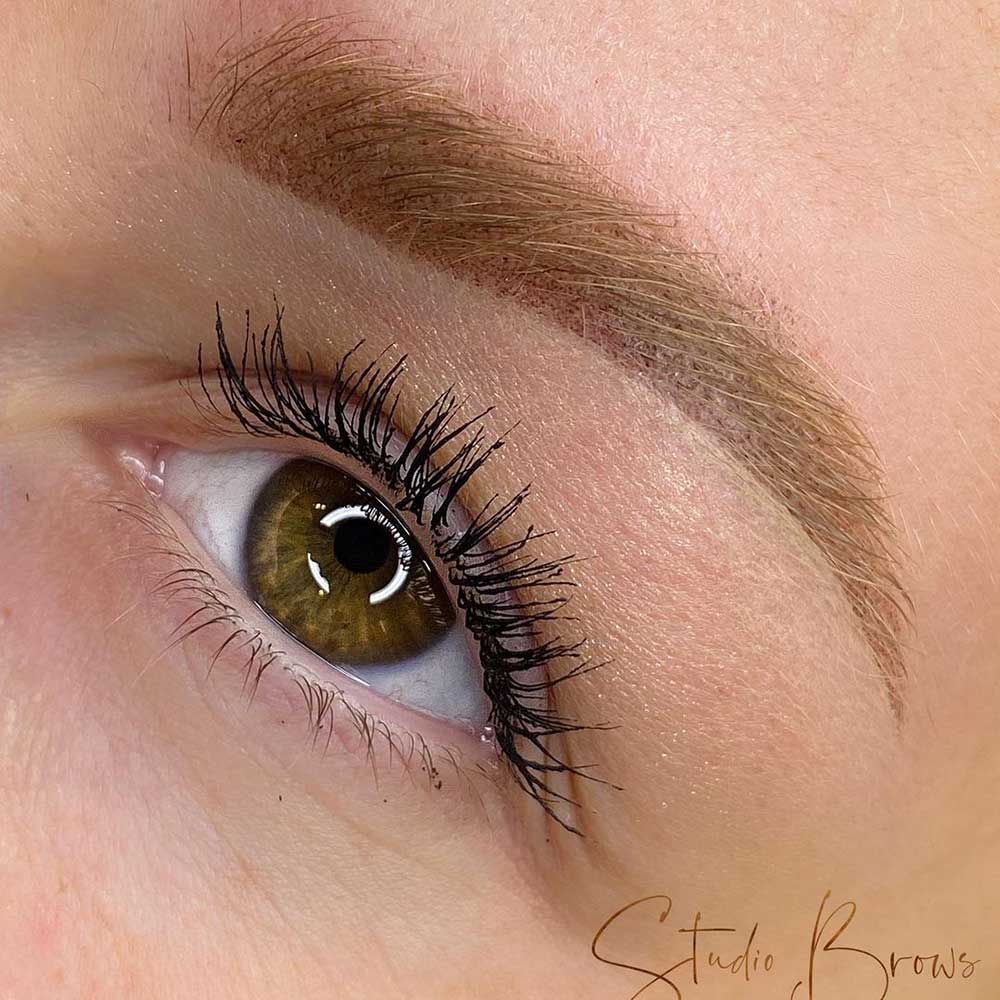
MICROSHADING SIDE EFFECTS
Are There Any Side Effects To Microshading?
Since the treatment implies piercing the skin over and over again, your skin is bound to react. In the first 48 hours after the procedure, you can expect some redness, swelling, and tenderness.
If these symptoms continue past day 3 or 4, contact your artist. You may be dealing with an infection or an allergic reaction.
Then, as the wounds start closing up, scabs will form all over the surface of your brows, and they’ll eventually start flaking and falling off. They will probably be itchy and look quite icky. Do not touch the scabs at any stage of the process.
Can You Be Allergic to Microshading?
Although allergic reactions are rare, it’s possible to be allergic to the pigments, cleansers, and numbing used.
Doing a patch test prior to the procedure eliminates the possibility of an allergic reaction.
MICROSHADING CORRECTION
Can the Color of Microshaded Eyebrows Be Corrected?
As the pigments start to fade, they sometimes turn color into either grayish or reddish-orange. If this happens, you can book a color correction appointment. The artist will use a corrector shade to neutralize the unwanted hues, and your brows will go back to the desired shade.
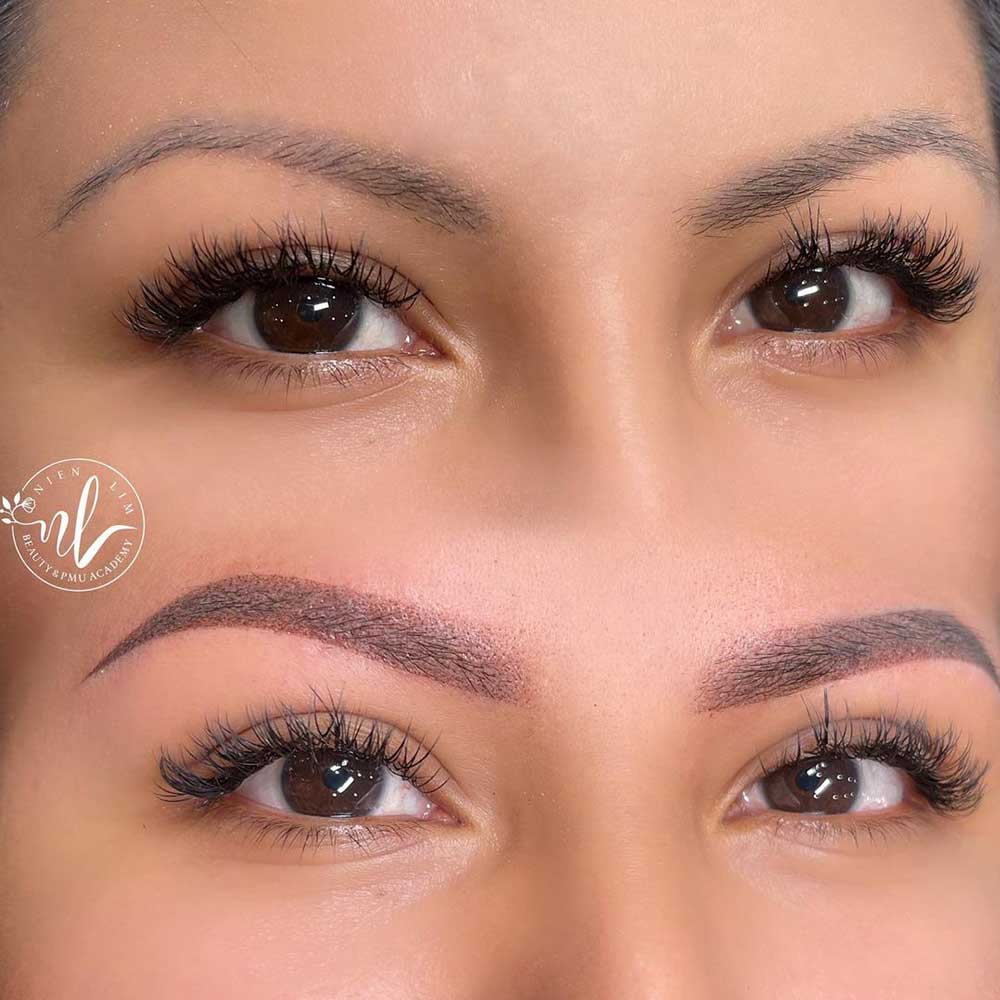
Can Microshaded Eyebrows Be Removed?
Yes.
If you decide you don’t want to have microshading anymore, you can get it removed, but the process is long and tiresome. So it’s best to either wait until they fade, or book a touch up and get them corrected and refreshed.
If this isn’t an option, you can get laser, saline, or glycolic acid removal. But all these are done gradually and you’ll have to get up to 10 sessions, with 6-8 weeks apart. All 3 methods require periods of healing after each session, and the price per session is at least $200. So it can get pricey and drag on for months.
PMUHub Tip: Starting the removal process is a big decision, and you should think it through carefully, especially if you just got your brows done and you don’t like the result. You might just need time to get used to your new look. You can always go for a touch up and correct them.
MICROSHADING COST
How Much Does Microshading Cost?
The average price of the treatment is around $600, but it can vary between $400 and $1500.The price of microshading treatment varies depending on your location and the experience and the exclusivity of the artist.
MICROSHADING – MAIN TAKEAWAYS
Microshading is a popular form of permanent makeup for a reason. The treatment has many advantages, such as saving you the time you spend on doing your eyebrows every morning.
Trendy and no-maintenance brows are what you get as a result. Also, the confidence boost you’ll get from permanently enhanced brows is priceless.
Make sure to get well informed before making the decision which salon to choose and don’t look for bargains, cause it can cost you more in the end – you don’t want to end up with a bad brow tattoo!
weekly insight into PMU insdustry
Subscribe to our FREE newsletter. 100% good stuff.

support us so we can keep providing you with free education , information and inspiration.
